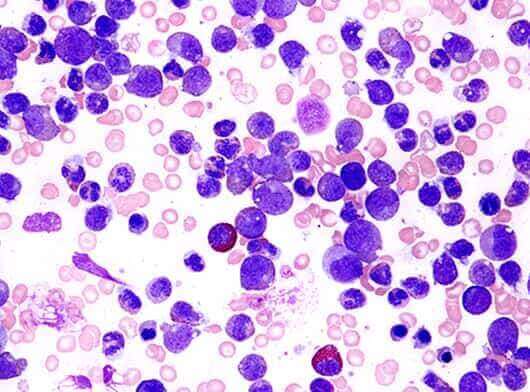Subsequently, the haematologist or medical oncologist will look at the type of blood cells and also carry out bone marrow examination looking for the presence of Philadelphia chromosome or bcr-abl gene which will confirm the diagnosis.
There are four main types of leukaemia. Two of them are acute and two are chronic. The Acute Leukaemias are Acute Myeloblastic Leukaemia (AML) and Acute Lymphoblastic Leukaemia (ALL) while the Chronic Leukaemias are Chronic Myeloid Leukaemia (CML) and Chronic Lymphocytic Leukaemia (CLL). Acute leukaemia develops quickly while Chronic Leukaemia develops slowly. In CML, white cells are present in excess. Their production goes out of control. These cells fill the bone marrow and also come out in the blood.
Also, exposure to certain chemicals, especially benzene over a period of time can result in blood cancers including CML. Benzene is a chemical in petrol and used in the rubber industry. However, exposure to petrol etc. in routine civil life cannot produce CML.
Symptoms of CML are vague. Tiredness, weight loss, excessive sweating, fullness in the left upper part of the stomach , discomfort or lump in the same region and feverish feeling may occur. These symptoms are very common while CML is rare.
Once the disease is advanced (for example after few years into blasc phase), there can be anaemia (lack of blood) leading to pale appearance, bruises on the surface of the skin due to bleeding , infection leading to fever and development of glands in the neck or at other areas (lymphadenopathy).
Treatment of CML depends on its phase. We will first discuss the treatment of Chronic Phase as most of the patients present in this phase. The standard-of-care today is Glivec (Gleevec, Imatinib mesylate), an oral pill. This is made by Novartis The usual dose is a single pill of 400 mg once a day. This has made almost all previous treatments as second-line therapy. Most of the patients respond to this treatment extremely well. They also tolerate it very well. Such patients should continue to take it for their whole life, without any interruptions. The dose should not be reduced without the treating physician’s / specialist’s advice and one should also not take it intermittently as both these activities reduce drug efficacy.
Usually the pill is taken after 30-60 minutes of a major meal, often the night time meal – dinner. It should be taken with a glass of water. This minimizes stomach intolerance. However, one can take it after lunch or even breakfast. The occasional patient may require a pill to prevent nausea. In this situation, Tab. Domstal is prescribed 30 minutes before Glivec.
In India, most commonly, CML affects the age group between 30-60 years. In the Western world, it affects the age group between 50-70 years. Rarely, it can occur in children and very old persons as well. It affects both males and females.


